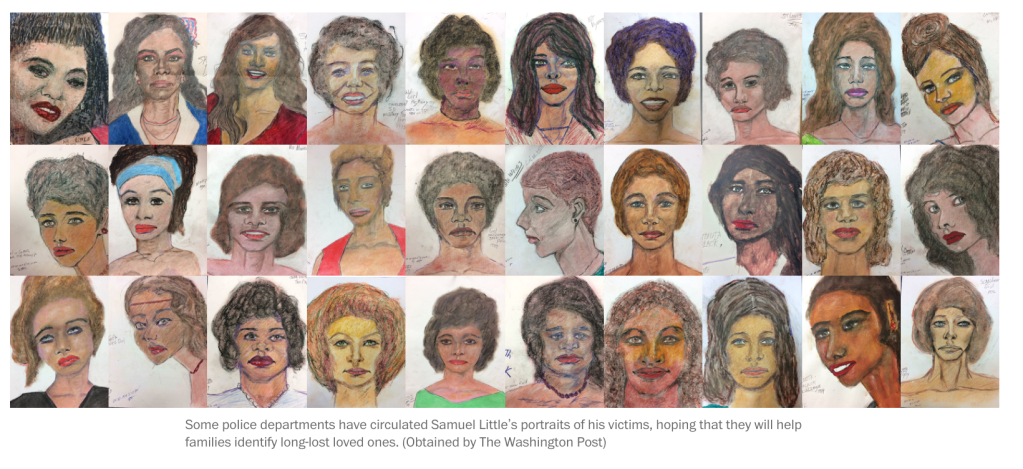Barrels of ink have been spilled over Samuel Little, America’s most prolific serial killer. But this three-part series, “Indifferent Justice,” was the first to reveal how Little was able to murder 93 times without fear of retribution by deliberately targeting women on the margins of society — sex workers, drug users and runaways, most of them women of color. Their deaths often either went unnoticed by the criminal justice system or stirred little outrage, The Post found. In some cases, police conducted only cursory investigations.
Even when police and prosecutors managed to tie Little to brutal rapes, killings or assaults, The Post found, the same factors that made his murders difficult to solve also made them difficult to prosecute. Witnesses either were tough to find or couldn’t be counted on to show up in court. When they did show up, jurors often were not inclined to believe them: More than once, Little beat rape charges by claiming his victim had accepted money for sex.
Real or perceived problems with witnesses repeatedly led prosecutors to accept convictions or plea deals on lesser charges, resulting in shorter sentences and a criminal record that betrayed few hints of the true scope of Little’s crimes.
Even today, Little’s victims and their families continue to suffer from that disregard. Since Little began cooperating with authorities in May 2018, he has confessed to killing 93 people in 19 states. But nearly half of them remain unidentified, with police struggling to close decades-old cases that failed to trigger extensive investigations or generate thick case files bristling with clues.

To tell the story behind the story, The Post conducted dozens of interviews with police, prosecutors and victims’ families; reviewed hundreds of hours of Little’s recorded confessions; and obtained thousands of pages of law-enforcement records, many of which had never been previously reported. Post designers integrated those records — including original police and autopsy reports, old photos and news clippings — into the story text and used them to form innovative collage-like illustrations that communicated mystery and revelation.
To promote the series, we featured these dynamic illustrations in popular Post newsletters, including Post Most and AboutUS, as well as on social media. The Post’s daily podcast, Post Reports, did a special episode on the series. And we worked to reach new subscribers on Apple News, where Part 1 ranked among the app’s Top Stories. Part 1 also was featured by Apple News editorial teams in Australia and Canada and wound up trending in both countries, helping the overall series draw an astonishing 3.5 million readers.
Long after the stories were published, the reporters continued to engage directly with readers who wrote to say that they believed they could help police identify the dead women — or that they wanted The Post’s help in learning whether their long-lost relative was among Samuel Little’s many victims.”